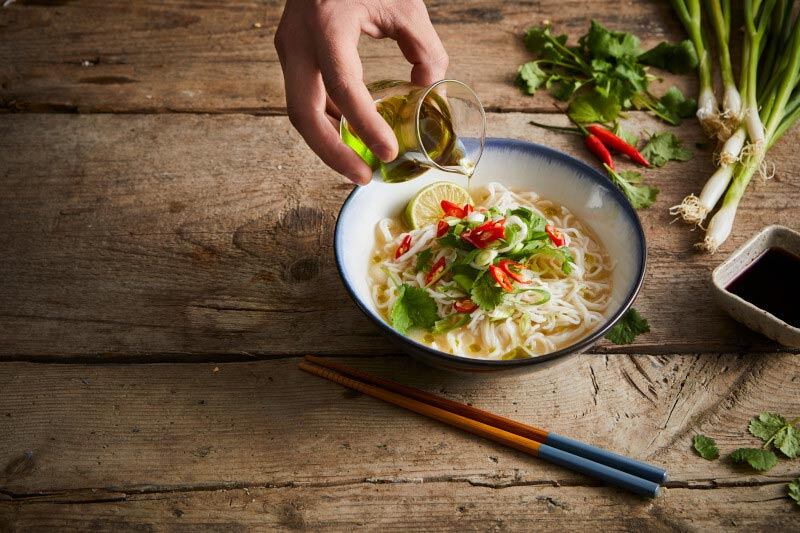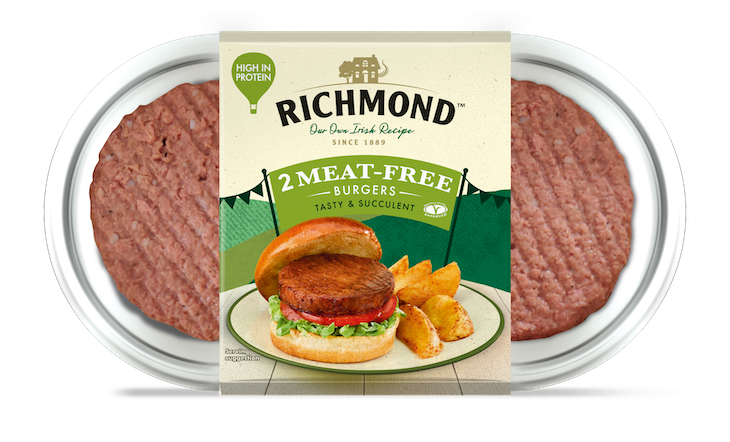The focus of Government and consumers is moving towards health. In addition to existing commitments to tackle sugar and salt in food there is a bigger issue – concern about people’s wellbeing following the pandemic.
The publication of the Government’s obesity strategy in July reflected this. In reference to it, the Department for Health and Social Care said evidence that obesity was an increased COVID-19 risk factor had highlighted an ‘obesity time bomb’.
That was followed days later by the launch of Part 1 of the National Food Strategy, which intensified pressure on food manufacturers to support healthy eating, with author Henry Dimbleby claiming the industry clothes “itself and its products in false virtue”.
The pressure on the sector did not stop. Think tank Demos in its report Turning the Tables claimed the root cause of obesity lay in the food sector.
Meanwhile, an IGD survey of 1,000 consumers published in September indicated 63% claimed health was a bigger motivator for them, up from 58% in 2019.
Dominating the headlines
While sugar and salt have dominated media headlines, flavourings face more challenges as preference for natural over artificial additives grows. Flavourings can also aid healthy eating by helping to keep reformulated food tasty.
James Smith, chairman of the UK Flavour Association, says: “Flavourings have a large role in helping to reduce salt, sugar and fat in foods. These all have functional properties, be that as a preservative or in adding visual and structural appeal or mouthfeel.
“Manufacturers cannot simply remove them and achieve the same results with their products. Flavours are therefore used to bridge these gaps and build back the taste and flavour lost by removing certain ingredients. In turn, this can help to increase the health profile of certain foods and beverages.”
He adds that significant science and innovation is underway in the UK flavour industry to create flavours that make fortified foods and beverages more appealing and palatable, to encourage healthier diets.
However, while many manufacturers continue to look for healthier options, consumers still need guidance.
Synergy Flavours argues that one of the challenges facing the food industry is tackling the notion believed by many consumers that ‘natural means healthy’.
Clean eating
It claims consumers want to know more about products than ever. ‘Clean eating’ is tipped to be the next ‘healthy’ trend as it becomes a lifestyle choice, and ingredients lists become shorter and more recognisable. Natalie Drake, category manager at Synergy Flavours argues there are several drivers for this including the fact that consumers lack trust and want to know more about their food in the wake of the COVID-19 pandemic.
“We can expect this to have a knock-on effect as consumers shift their focus onto products which offer a natural health halo, through flavours and clean-label ingredients,” she says.
As a result, she expects food and beverages with natural claims to become more important in helping to cut sugar content.
“One way that manufacturers are creating a more natural image is by using ‘less sweet’ flavour profiles, such as botanicals, florals and citrus, as an easy way to cut down on sugar,” she says.
“Dark chocolate is also rapidly gaining favour with consumers due to its healthy image with 3.5% growth predicted by 2021 versus 2.1% growth of milk chocolate. These types of flavour profiles reduce the need for sweetness within a product and therefore offer consumers a more balanced product that is naturally low in sugar.”
She adds that reformulation is leading to rising use of inulin as a sugar replacer, while botanicals and herbs with perceived wellness-boosting properties are experiencing steady growth across several snack and beverage categories.
Low sugar? Proof of pudding is in the eating
Bakery products and desserts have been playing with natural flavourings to help lower sugar content.

Saquib Ramday, category director for Europe, Beverages, Bakery and Confectionery at Tate & Lyle (pictured, right), says that manufacturers must adapt either by reformulating, or by launching new products.
Tate & Lyle offers stevia-based natural flavourings and in response to consumers’ desire for natural and plant-based options, it is developing food and beverage solutions catering for ‘natural flavourings’ labelling.
The company also highlighted its rare sugar product Allulose, which is yet to be launched in Europe, which can also act as a flavouring with modifying properties.
Tracey Hughes, managing director at Henley Bridge, says bakery and dessert manufacturers have been working hard to meet Public Health England’s sugar reduction targets.
“We are continually investing in new technologies and their applications, respecting all key aspects of formulations. Sweetness, taste-profile, mouthfeel and re-bulking are all critical to creating great tasting products, and our credentials in this area are strong.”
Henley Bridge’s Sosa range is available in a wide range of intense natural flavours, including mango, wild strawberry, passion fruit and kiwi, and are ideal for confectionery, sauce, ice creams, baked goods and desserts.
“Vegetables are also getting in on the act and making an appearance in desserts and healthier sweet treats,” says Hughes. “Beetroot, sweet potato and carrot powders in cakes are where it’s at in terms of NPD, and we’re seeing an increasing number of bakers using Sosa Vegetable Flavouring Powders in their desserts.”
Pressure to reformulate
Pressure continues to build on the industry to reformulate in line with sugar and calorie reduction targets, she says. That’s despite Public Health England’s report published in October highlighting that, although progress had been made, virtually all food categories had fallen short of aims to cut sugar by 20% by 2020.
“Reformulating products to reduce sugar or fat presents several sensory challenges that affect taste, sweetness, indulgence and mouthfeel,” she adds.
Wouter Stomph, North America head of product development and innovation at Olam Cocoa, says the drive for products to shift to fewer artificial ingredients, not just less sugar, continues: “Many are turning away from artificial ingredients and complex chemical compounds, instead looking for products with short ingredients lists full of flavours they recognise and understand.”
Natural flavourings like cocoa are a great solution, as they have intense flavour conveying the sweetness consumers crave without the high-sugar content, he adds.
Olam’s innovation lab has crafted a special cocoa powder that delivers a full-flavoured chocolate taste without any added sugar. Alternative options to sugar and savoury mean more unusual flavours such as florals, botanicals and herbs and unusual spice flavours like turmeric and ginger.
Stomph predicts the future of flavourings will be ‘adventurous and experimental’.
Growing trends
“The trend for sweet and savoury is growing, and we increasingly see this emerge in unison with the trend for added value. In Asia, for instance, consumers are increasingly opting for snacks that have mood or energy-boosting benefits, using flavours like matcha and miso. Both these flavours offer the intensity consumers crave without the need for salt and sugar.”
Lee Williams, principal research chef for Europe, the Middle East and Africa at McCormick, agrees innovation around natural, clean, botanical flavourings is offering functional benefits while flavours such as ginger, hibiscus and rose have been on the rise. “We have seen sweet spices such as Schwartz cinnamon, which is matured for up to 20 years, increasingly being used in healthy breakfast dishes.
“Star anise, ginger and fennel [are] all [being] used to infuse flavours into foods such as overnight oats or chia breakfast bowls in place of sugar laden syrups. Natural botanicals flavours such as elderflower, rose and orange blossom violet are now becoming mainstream across multiple channels as they add a natural zing of flavour.”
Matt Fowler, head of UK & Ireland at Langdon Ingredients, says natural botanicals and other ingredients don’t just offer flavour alternatives, but positive health benefits outside of simple sugar and salt reduction.
Fowler says that fermented ingredients such as miso and soy powders are used to create rich, savoury umami notes, as well as promoting good gut health. Meanwhile, turmeric, ginger and manuka honey help marketers push immunity boosting messages.
He says that nowhere is the impact of the health agenda more evident than in the breakfast, beverages and snacking categories, where competition is fierce among products claiming sugar-free or low-sugar formulations.
Pleasing consumers' palates
“To achieve these claims, while still pleasing consumers’ palates, manufacturers are reliant either on artificial sweeteners, or increasingly, dates, fruit pastes or natural sweeteners such as dates, fruit pastes/concentrates, honey, maple syrup or sugar alcohol compounds,” Fowler says.
“Savoury categories also have manufacturers scrambling to offer clean-label nutritional panels that boost their vegan-friendly credentials, are low in sodium, and contain no-MSGs.
“Naturally-derived, plant-based flavours, like those in the Japanese-manufactured Nikken Range, are proving particularly popular with food technologists, looking to retain full bodied, yet subtle, savoury flavours, while maintaining – and extending shelf stability and reduced food preparation.”
James Street, marketing director for Europe, Middle East and Africa at Sensient Flavors predicts more new and unusual natural flavours in the future as nutrition and health dominate. “The trend has been moving steadily towards natural ingredients and extracts for some time, as consumers continue to demand clean label in order to support an active, healthy lifestyle.
“Extracts, natural, authentic and clean label will all continue into 2021 and 2022. However, consumers are also excited and inspired by new and unusual flavours – some things that are not common in a certain region but from other countries or continents will be key to continuing value, driving category growth.”
Case study; Besmoke
Besmoke founder Huw Griffiths has worked with food scientists to make smoked foods healthier while reducing salt.

“We are taking out the oily tar elements of smoke,” he says. “This ‘pure smoke’ is shown to enhance flavour and reduce salt. Customers such as the bigger flavour houses have huge momentum behind promoting natural favours.”
High-salt snacks, sauces, condiments, pizzas and coatings can gain from the patented method, which cuts the carcinogens out of aerosol smoke, improves taste and smell and is being used to make vegan food taste richer and meatier.




